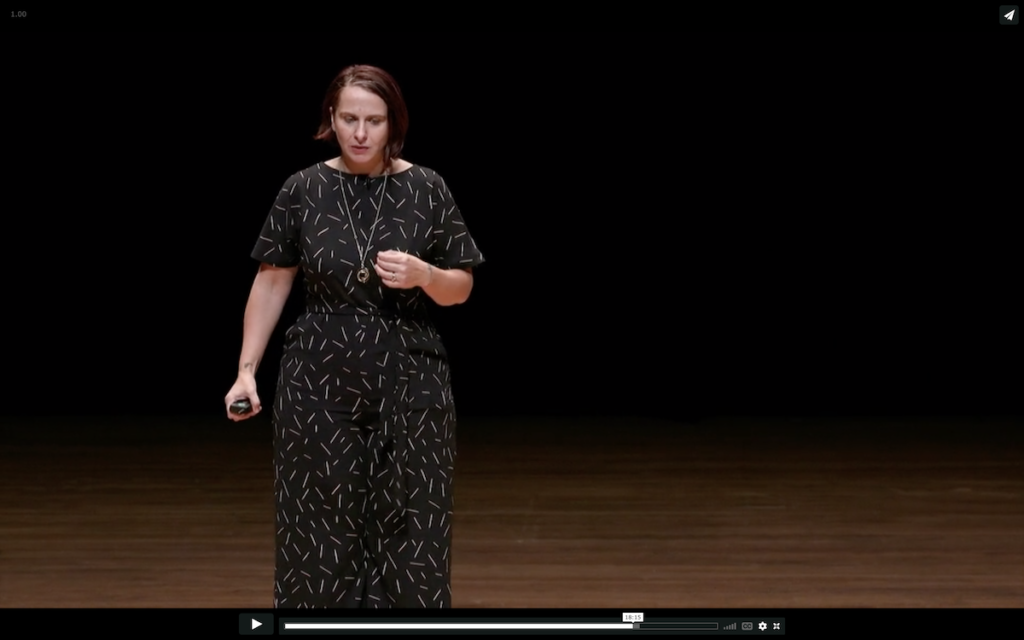The other day, I watched a wonderful talk from Anna Pickard, who is Slack’s Director of Brand Communications. The talk is called “How to make brands sound human?” It was amazing and insightful, so go check it out if you have the time. Even though she’s focused on the tone and voice of brands, I think her points make a lot of sense to branding overall. All in all, she has amazing insight on branding.
Voice versus tone
Pickard defines voice and tone as two separate things that go hand in hand together. Voice is more internal. It’s about understanding yourself, your brand, knowing who you are, what you stand for, how to speak, the motivations behind it all, the why, and things like. Whereas tone is more external, it’s understanding your audience, knowing when to talk to them, when not to and so on.

I never thought about it this way, but this makes so much sense. Especially, when you relate it back to mission and vision, which also have external and internal factors. When it comes to branding, it’s best to have everything well defined, not only to what the parameters are but whether or not it relates to those internal or external factors too. This way, those parameters can be even more precise and direct. In turn, making communication with your target audience more effective.
Everybody wants to be human
Today, many companies that want to sound human and be personable, friendly, and relatable. At the same time, there are a lot of everyday people – aka consumers – who expect interactions with technology to be more conversational too. A lot of it has to do with things like Siri or Alexa, making these interactions possible. When you’re speaking with either one of those, you’re communicating with them as if you’re talking to another person. There is no reason why buying something online can’t have a similar experience, right? If you were to think of Alexa or Siri as individual brands, this gives way to another question: why can’t people and brands connect and communicate similarly? Which brings us back to the original point of this article on how to make brands sound human.
The transformation of communication between brands and audiences
Pickard had a wonderful analogy on how communication between consumers and companies used to be and what it is now.
Back in the day, it was more like watching a movie where the movie is made in its own time then delivered to viewers who, again, watch it on their own time. The feedback loop through this one-way communication was massively delayed. If people didn’t like what they saw, you couldn’t change the movie, only release something completely new all over again.
Eventually, this morphed more into live theater where there was some feedback loop. You heard the reactions of the audiences, maybe even saw it from behind the curtains, whether it was laughter or anything else. The performance still had to go on, but it could be improved upon for the next showing.
While right now, it’s a form of highly immersive communication. It’s as if you’re giving a small talk to a live audience, where you can ask and answer questions or address any concerns or uncertainty. Companies and their audiences can communicate much more swiftly and effectively. The big drawback is that you’re not the only one who is communicating with consumers in this manner – every company is. Think about the number of random companies that have Twitter or Instagram accounts such as dish soaps or radiators. It’s wild.

Since every company wants their audience’s attention, wants to connect with them, and wants them to make the purchase – our companies included – it’s challenging to stand out and connect among this noise. And this arises a few critical questions: what does it mean for a brand to sound human? Is this the right idea for your company? Is it possible?
Is it even possible to make a brand sound like a human?
It is still hard to make machines, and robots act flawlessly human. Even Alexa and Siri have to be pre-scripted while they still face many limitations. Therefore, it’s also hard to ask a whole company to do the same in order to maintain a human-sounding brand. Not to mention creating this brand sound like a human in the first place.

Yet, the solution proposed by Anna Pickard is simple and quite obvious when you think about it. She suggests to simply choose your moments where you focus on the human qualities or personality of your brand. It’s not about doing it all the time, but selecting the right opportunities to show empathy, reward your audience, or otherwise express yourself in a way that further connects your brand with your audience.
She’s absolutely right.
One example she mentioned in her talk was a bank. It’s okay to be friendly, personable, and funny when a new user is signing up for a brank account. Yet, it’s entirely inappropriate to be cheeky when the bank is sending a late fee notice. That’s the whole premise of choosing your moments. This isn’t to say that you can’t write a thoughtful message while sending a late fee notice, one that’s filled with empathy and steps to help the account owner prevent this from happening again. It’s more about emotional intelligence and reading the room as we human do in daily interactions.
Picking your moments
As a designer, I cannot tell you how to write the best possible copy that will perfectly capture your brand. I’m not a copywriter after all. However, my responsibility lies in helping my clients pinpoint where these opportunities are and what kinds of message fits them best. That’s a big premise of user experience design too. It allows us to take a look at the different touchpoints a visitor, client, or customer has with your brand and appropriate design interactions. This includes things like being funny within the onboarding experience. Or, being empathetic and helpful when they encounter a negative experience such as an error or a late fee charge.
In her talk, Pickard says that by choosing the right moments your brand then mimics human-like behavior a lot more. In turn, this allows your audience to create these emotional connections to the brand. That’s a big step in having a brand sound like a human Think about it from the point of view of real human-to-human interactions. We don’t like it when someone says something inappropriate despite the mood change within a conversation. We find it rude, and it can sometimes be offensive. The same goes for an inappropriate message from a brand. We also don’t like it when people appear to be faking it, which can happen when a brand just doesn’t know when to stop. Ironically, doing it over the top is a lot more robotic then personable.
Three steps to a human brand
Pickard had three points of advice for brands that want to sound human. The first two, she says, are paramount. First, your brand message has to be clear. There is no other way around it. If the messaging isn’t clear, you’re not going to attract the right kind of people. Second, your messages need to be concise. I’ve spoken often about the importance of concise messaging and the horrible side effects of mixed signals. Brands with concise messaging will go much further in attracting the right kind of audience as well. Those two, according to Pickard, go hand in hand together. Apply this advice to everything brand-related, not just tone and voice, to get the best results.
…be clear and concise, that’s the main thing. People think of brands as having this amazing personality, whatever no, we need to be clear and concise first. We don’t want to pack everything with personality ’cause as I said, everyone’s talking at the same time.
And when you have a little bit of personality that’s great, it’s like finding a ladybird out in the wild. But, when you have a lot of personality, it’s terrifying (anyone who has every had an infestation of ladybirds will know this).
Anna Pickard: How to Make Brands Sound Human
Only then do you add the humanness into the mix by choosing your moments to add that human touch. And that’s the big step in making sure your brand sound like a human.
The takeaway
Choosing your brand’s human moments with intent and purpose is how you capture your audience and connect with them in a much more powerful and better way. I’m not going to sugarcoat it and say it’s easy. You do have to take the time to identify where those opportunities to connect with your audience are. In order to have a brand that sounds human and connects and resonates with your target audience, you must take the time to understand your brand thoroughly. It’s a significant effort. But, one that pays off with a loyal following of like-minded people who are your ideal customers and clients.


